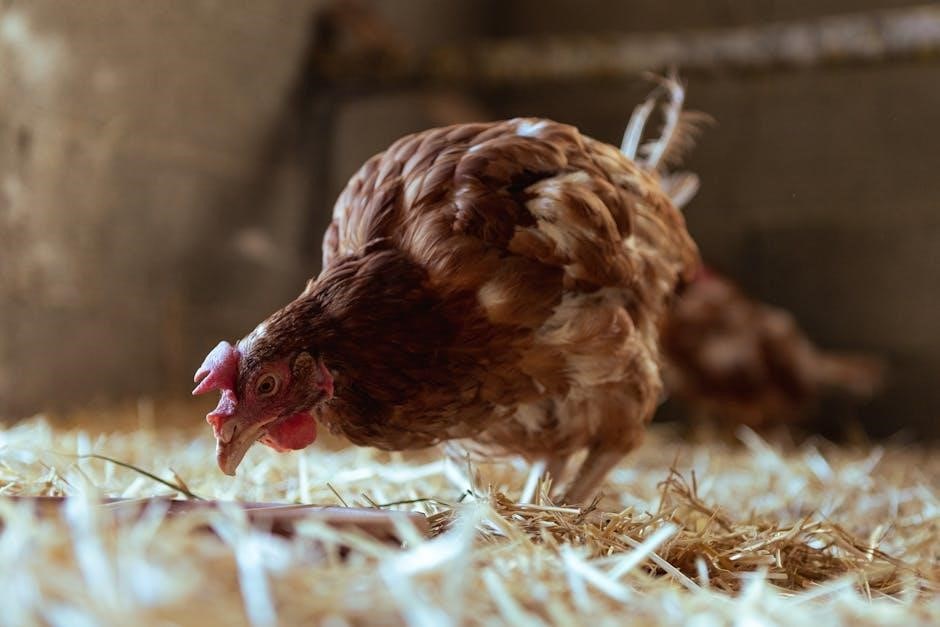This comprehensive guide provides step-by-step solutions to Nelson Calculus and Vectors 12, offering clear explanations for complex problems. It is an essential resource for students seeking to master calculus and vector concepts efficiently.
Overview of the Textbook
Nelson Calculus and Vectors 12 is a comprehensive textbook designed for high school students, focusing on calculus and vector concepts. It is structured to align with curriculum requirements, offering detailed explanations and practice problems. The textbook covers essential topics such as limits, derivatives, integrals, and vector operations, providing a solid foundation for understanding advanced mathematical principles. Available in PDF format, the solutions manual accompanies the textbook, offering step-by-step solutions to exercises and past exams. This resource is particularly valuable for students seeking to improve their problem-solving skills and grasp complex calculus and vector concepts. By following the textbook’s structured approach, students can build a strong understanding of mathematical principles and their practical applications in various fields.

Importance of Solutions Manuals in Calculus and Vectors
Solutions manuals are invaluable resources for students studying calculus and vectors, providing step-by-step explanations for complex problems. They help students understand how to approach and solve challenging exercises, reinforcing their grasp of key concepts. By reviewing worked solutions, students can identify and correct common mistakes, improving their problem-solving skills. The Nelson Calculus and Vectors 12 Solutions PDF offers expert-verified answers, ensuring accuracy and reliability. This resource is particularly useful for self-study and exam preparation, as it allows students to assess their understanding and fill knowledge gaps. Accessible online or in PDF format, the solutions manual serves as a convenient tool for mastering calculus and vector principles, empowering students to achieve academic success with confidence.

Structure of the Solutions Manual
Organized by chapters, the solutions manual provides detailed answers, aligning with the textbook. It offers step-by-step explanations and examples, available in PDF and online formats for easy access and understanding.
Chapter-by-Chapter Breakdown
The Nelson Calculus and Vectors 12 Solutions PDF is structured to align with the textbook, offering detailed solutions for each chapter. Chapters 1 through 12 cover essential topics, from prerequisite skills like simplifying expressions and solving equations to advanced calculus concepts such as integration, series, and parametric functions. Each chapter provides step-by-step explanations for problems, ensuring clarity and understanding. For instance, Chapter 1 focuses on introductory calculus concepts, while Chapter 6 delves into vector operations and applications. The manual also includes dedicated sections for vector addition, scalar multiplication, and cross products, with practical examples to illustrate key principles. This organized approach allows students to review and master concepts systematically, making it an invaluable resource for academic success.
Key Features of the Solutions PDF
The Nelson Calculus and Vectors 12 Solutions PDF offers a wealth of features designed to enhance learning and problem-solving. It provides step-by-step solutions to complex calculus and vector problems, ensuring clarity and understanding. The manual includes expert-verified answers, making it a reliable resource for students. With comprehensive coverage of all chapters, the PDF addresses topics from limits and derivatives to vector operations and applications. Each solution is presented in a clear, concise manner, allowing students to follow the logic and reasoning behind each step. Additionally, the PDF is easily accessible, available for free download from platforms like Z-lib.org, and is compatible with various devices. Its organized structure and detailed explanations make it an indispensable tool for mastering calculus and vectors, helping students build confidence in their problem-solving abilities.
How to Navigate the Solutions Effectively
To maximize the benefits of the Nelson Calculus and Vectors 12 Solutions PDF, start by reviewing the chapter breakdown to align your study material with the textbook. Focus on understanding the step-by-step explanations for each problem, which clarify complex concepts; For challenging topics, revisit the prerequisite skills section to strengthen your foundation. Use the index to quickly locate specific problems or chapters, saving valuable study time. Regularly practice problems on your own before referring to the solutions to identify areas needing improvement. Pay attention to common mistakes highlighted in the manual to avoid repeating them. Additionally, utilize the PDF’s cross-references to explore related problems and deepen your understanding; By systematically working through the solutions and applying these strategies, you can efficiently master calculus and vectors. This structured approach ensures you make the most of the resource for academic success.

Calculus Fundamentals
Calculus fundamentals form the foundation of understanding key concepts. This section covers evaluating functions, finding limits, derivatives, and integrals, essential for advanced topics in calculus and vectors.
Prerequisite Skills for Calculus
Mastering prerequisite skills is crucial for success in calculus. These include simplifying algebraic expressions, solving equations, and understanding functions. Students should be proficient in finding slopes and equations of lines, as these concepts lay the groundwork for derivatives. Additionally, familiarity with trigonometric functions and basic graphing skills is essential. A strong foundation in these areas ensures a smooth transition into advanced topics like limits, derivatives, and integrals. Neglecting these skills can hinder progress, making it challenging to grasp core calculus concepts. Regular practice and review of these fundamentals are highly recommended to build confidence and proficiency. By reinforcing these skills, students can approach calculus with a solid understanding, enabling them to tackle complex problems effectively. This preparation is vital for achieving success in both calculus and vectors.
Evaluating Functions and Finding Limits
Evaluating functions and finding limits are foundational concepts in calculus. Functions are thoroughly explored, emphasizing their domains, ranges, and compositions. Limits, the cornerstone of calculus, are introduced through numerical and algebraic approaches. Techniques such as substitution, factoring, and L’Hôpital’s Rule are detailed to handle indeterminate forms like 0/0 and ∞/∞. Graphical interpretations complement algebraic methods, aiding in understanding one-sided limits and continuity. These skills are crucial for progressing to derivatives and integrals, enabling students to analyze function behavior and solve real-world problems. Regular practice with diverse examples ensures mastery, while the solutions manual provides step-by-step guidance for clarity. This chapter equips students with the tools to confidently evaluate functions and determine limits, a critical step in their calculus journey.
Understanding Derivatives and Rates of Change
Derivatives measure the rate at which a function changes, providing insights into the behavior of functions. The concept begins with the limit definition of a derivative, followed by rules like the power rule and product rule. Geometrically, derivatives represent the slope of the tangent line to a function at a specific point. Understanding rates of change is crucial for analyzing motion, optimization, and related rates problems. The solutions manual offers detailed step-by-step derivations and practical examples, ensuring clarity. Regular practice helps solidify these concepts. This foundation is vital for advanced topics like integration and differential equations.

Vector Operations and Applications
Vector operations include addition, scalar multiplication, and dot/cross products. These concepts are applied in physics and engineering to solve real-world problems, demonstrating their practical significance in calculations and modeling.
Vector Addition and Scalar Multiplication
Vector addition and scalar multiplication are fundamental operations in vector algebra. Vector addition involves combining two or more vectors geometrically or algebraically, resulting in a new vector. Scalar multiplication entails multiplying a vector by a scalar, altering its magnitude while maintaining direction. These operations are essential for solving problems in physics and engineering, such as force analysis and motion description. Understanding these concepts is crucial for advancing in calculus and vectors, as they form the basis for more complex operations like the dot and cross products. The solutions manual provides detailed examples and step-by-step explanations to help students master these operations, ensuring a solid foundation for future topics.
Dot Product and Cross Product
The dot product and cross product are essential operations in vector algebra. The dot product of two vectors a and b, denoted as a · b, results in a scalar. It is calculated as a · b = |a||b|cosθ, where θ is the angle between them. This operation is crucial for determining the projection of one vector onto another and calculating work in physics. The cross product, a × b, yields a vector perpendicular to both a and b. It is computed using the determinant of a matrix involving unit vectors and the components of a and b. The magnitude is |a||b|sinθ, and its direction follows the right-hand rule. Both products are fundamental in various applications, from physics to engineering, providing scalar and vector results respectively for different analytical needs.
Applications of Vectors in Physics and Engineering
Vectors play a pivotal role in physics and engineering, providing a mathematical framework to describe quantities with both magnitude and direction. In physics, vectors are used to represent forces, velocities, and accelerations, enabling the analysis of complex systems like projectile motion and Newton’s laws. Engineers utilize vectors to design structures, calculate stresses, and model electromagnetic fields. The dot and cross products are integral in these applications, allowing for precise calculations of work, torque, and magnetic interactions. Additionally, vectors are essential in navigation systems, robotics, and computer graphics, where they facilitate 3D modeling and transformations. The Nelson Calculus and Vectors 12 Solutions PDF provides detailed solutions to problems in these areas, reinforcing understanding and practical application of vector operations in real-world scenarios, making it an invaluable resource for students and professionals alike.

Advanced Topics in Calculus
This section explores integration, series, and parametric functions, providing in-depth solutions to complex problems. It equips students with advanced techniques for solving real-world mathematical challenges effectively.
Integration and Its Applications
Integration is a fundamental concept in calculus, enabling the calculation of areas under curves and volumes of solids. The Nelson Calculus and Vectors 12 Solutions PDF provides detailed solutions to integration problems, including definite and indefinite integrals. Students can explore techniques such as substitution, integration by parts, and partial fractions. The manual also covers applications of integration in physics, engineering, and economics, such as calculating work, center of mass, and accumulated change. Step-by-step examples and practice problems help reinforce understanding. Key features include clear explanations of integral properties and their practical relevance. By mastering integration, students gain essential skills for solving complex problems in various STEM fields. The solutions manual serves as an invaluable tool for both homework assistance and exam preparation, ensuring a solid grasp of integration concepts and their real-world applications.
Series and Sequences
Series and sequences are crucial concepts in calculus, focusing on the behavior of ordered sets of numbers and their sums. The Nelson Calculus and Vectors 12 Solutions PDF provides detailed explanations and solutions for analyzing convergence, divergence, and properties of sequences and series. Students explore arithmetic and geometric sequences, as well as more complex series like power series. The manual includes step-by-step solutions for applying convergence tests, such as the ratio test, root test, and integral test. Additionally, it covers applications of series in approximating functions and solving real-world problems. Practice problems and examples help reinforce understanding of these fundamental concepts, ensuring students can identify patterns, determine limits, and evaluate sums with confidence. The solutions PDF serves as an excellent resource for mastering series and sequences, essential for advanced calculus topics.
Parametric and Polar Functions
Parametric and polar functions are essential tools in calculus for describing motion and curves. The Nelson Calculus and Vectors 12 Solutions PDF thoroughly explores these concepts, offering detailed solutions for parametric equations and polar coordinates. Students learn to analyze parametric functions, eliminate parameters to find Cartesian equations, and compute derivatives for velocity and acceleration. For polar functions, the manual provides step-by-step guidance on converting between polar and Cartesian systems, sketching graphs, and calculating areas. Key applications, such as modeling projectile motion and analyzing circular paths, are highlighted. The solutions also cover integration in polar coordinates, simplifying complex area calculations. With clear explanations and practice problems, the PDF helps students master these advanced topics, preparing them for applications in physics, engineering, and higher-level mathematics.

Practice and Review Strategies

This section emphasizes consistent practice, error analysis, and utilizing online tools for better grasp of calculus and vectors, enhancing problem-solving skills and exam readiness.
Importance of Regular Practice
Regular practice is essential for mastering calculus and vectors, as it reinforces understanding and builds problem-solving skills. Consistent practice helps students apply concepts effectively, ensuring readiness for exams and real-world applications. By solving problems regularly, learners develop a deeper grasp of complex topics like limits, derivatives, and vector operations. This consistent effort improves accuracy, reduces errors, and enhances confidence. Additionally, regular review of solutions manuals and online resources provides clarity and supports independent study. Over time, this dedication leads to improved academic performance and a stronger foundation in calculus and vectors.

Reviewing Common Mistakes
Reviewing common mistakes is crucial for improving problem-solving skills in calculus and vectors. Many students struggle with algebraic manipulations, limit evaluations, and derivative calculations. Identifying these errors early helps prevent them from becoming ingrained. The Nelson Calculus and Vectors 12 Solutions PDF highlights frequent pitfalls, such as incorrect application of differentiation rules or mishandling of vector operations. By analyzing these mistakes, students can develop a clearer understanding of fundamental concepts. Regularly reviewing errors fosters a deeper appreciation of problem-solving strategies and enhances overall performance. This process encourages students to approach challenges systematically, reducing frustration and building confidence in tackling complex problems.
Using Online Resources for Additional Help
Supplementing your studies with online resources can significantly enhance your understanding of calculus and vectors. Websites like Z-lib.org offer free access to the Nelson Calculus and Vectors 12 Solutions Manual, providing step-by-step solutions to textbook problems. Additionally, platforms like BooksReadify and EasyPDFs.cloud offer summaries, lecture notes, and exam prep materials. These resources are invaluable for clarifying complex concepts and reviewing challenging topics. Many online forums and educational websites also provide interactive tools, video tutorials, and practice problems tailored to the Nelson curriculum. By leveraging these resources, students can gain a deeper understanding of the material and address specific areas where they need improvement. Utilizing online resources effectively complements traditional study methods, ensuring a well-rounded approach to mastering calculus and vectors. Regularly exploring these tools can help students stay confident and prepared throughout their course.

Final Preparation for Exams
Effective study techniques, such as timed practice and prioritizing challenging topics, ensure readiness. Utilize the solutions manual for targeted revision, focusing on understanding rather than just memorization of problems.
Effective Study Techniques
Mastering calculus and vectors requires a strategic approach to studying. Start by setting clear goals and breaking study sessions into manageable chunks. Focus on understanding concepts rather than memorizing formulas. Active learning techniques, such as solving problems while reviewing solutions, enhance retention. Regularly review mistakes to identify patterns and improve weak areas. Utilize the Nelson Calculus and Vectors 12 Solutions PDF to practice problems and check your work. Time management is crucial; allocate specific periods for each topic. Engage in self-assessment by attempting past exams or practice tests. Collaborate with peers or join study groups to discuss challenging problems. Consistency is key—regular review prevents knowledge gaps. By combining these strategies, students can build a strong foundation and approach exams with confidence.
Time Management During Exams
Effective time management during exams is critical for success in calculus and vectors. Allocate time proportionally to each question based on its weight. Start with simpler problems to secure early marks, then tackle more challenging ones. Skim through the entire paper first to identify straightforward questions. Budget at least 5-10 minutes per problem, depending on complexity. Use the Nelson Calculus and Vectors 12 Solutions PDF to practice pacing. Avoid spending too long on a single question; move on if stuck. Review your work within the remaining time to catch errors. Prioritize questions with higher point values to maximize scores. Stay calm and systematic to ensure optimal performance. By adhering to a structured approach, students can efficiently manage their time and achieve better results.
Utilizing the Solutions Manual for Revision
The Nelson Calculus and Vectors 12 Solutions PDF is an invaluable tool for effective revision. It provides detailed, step-by-step solutions to textbook problems, enabling students to understand complex concepts thoroughly. By cross-referencing their own work with the solutions, students can identify mistakes and improve their problem-solving skills. The manual also highlights common errors, offering insights to avoid them in exams. For revision, focus on practicing past exam questions and reviewing challenging topics. Use the solutions to verify answers and understand methodologies. Regular use of the manual reinforces understanding and builds confidence. It is particularly useful for self-study, allowing students to assess their progress and address weaknesses systematically. Incorporating the solutions manual into study routines ensures a comprehensive and efficient review process, ultimately leading to better academic performance.


















































